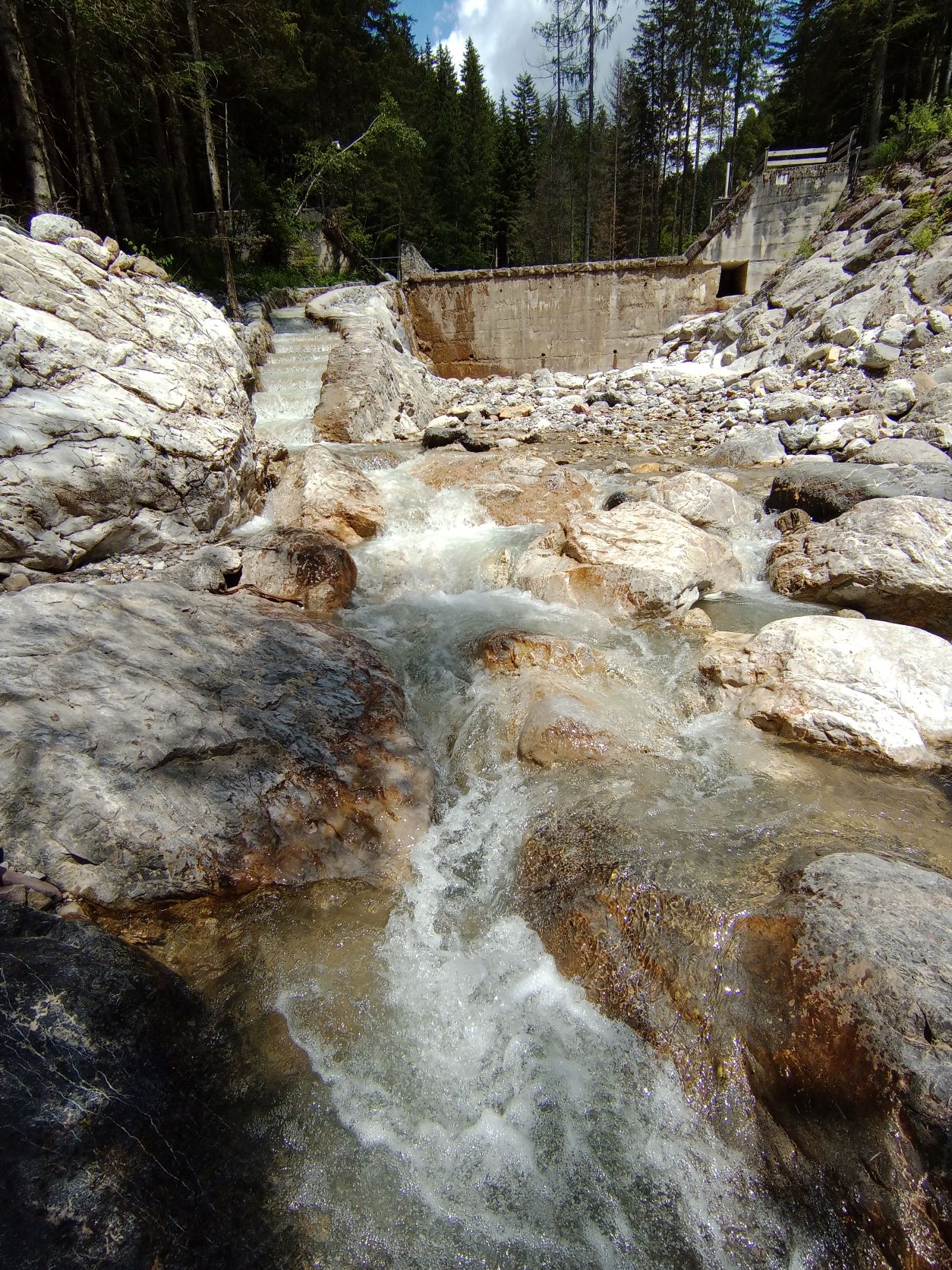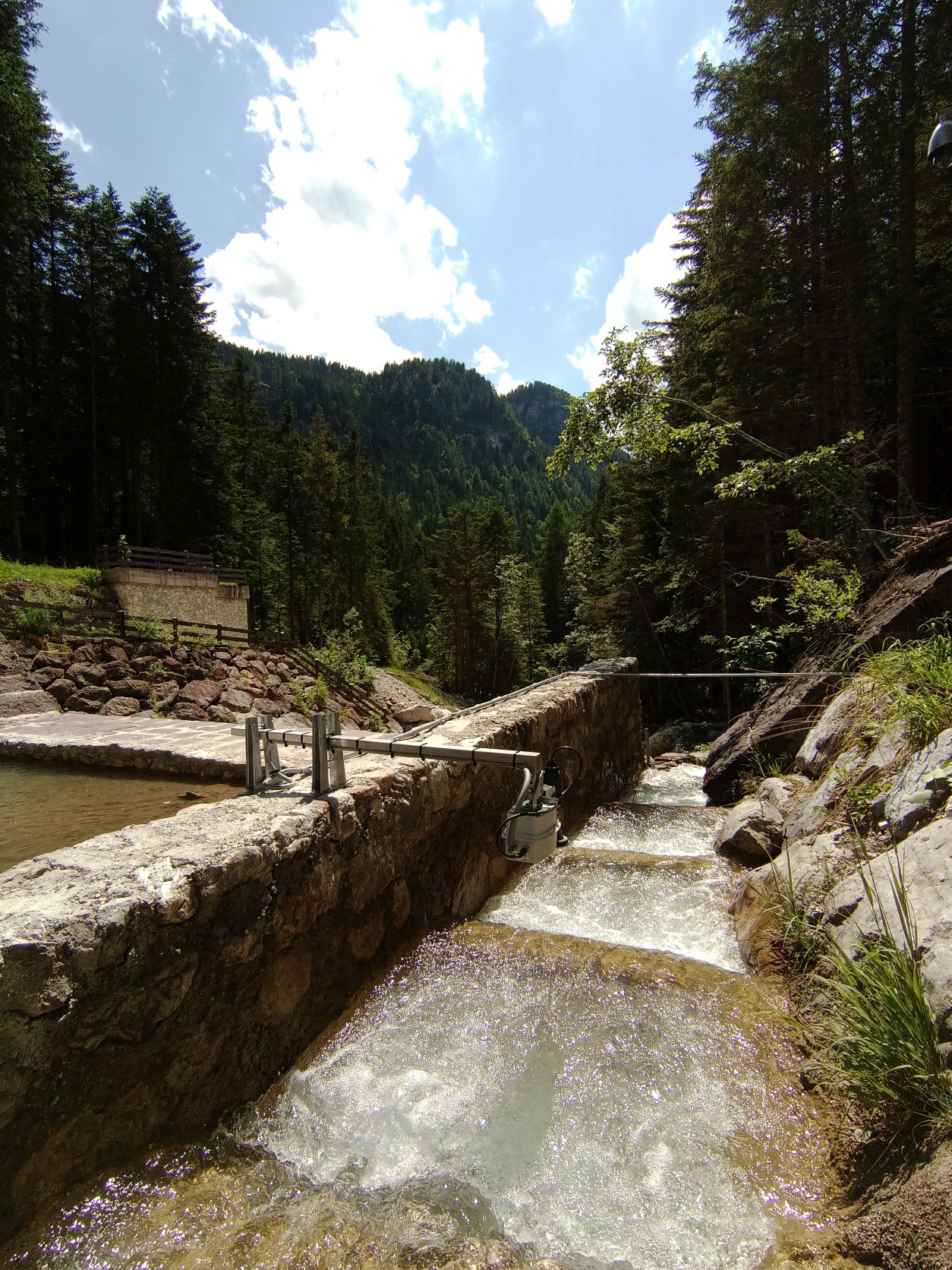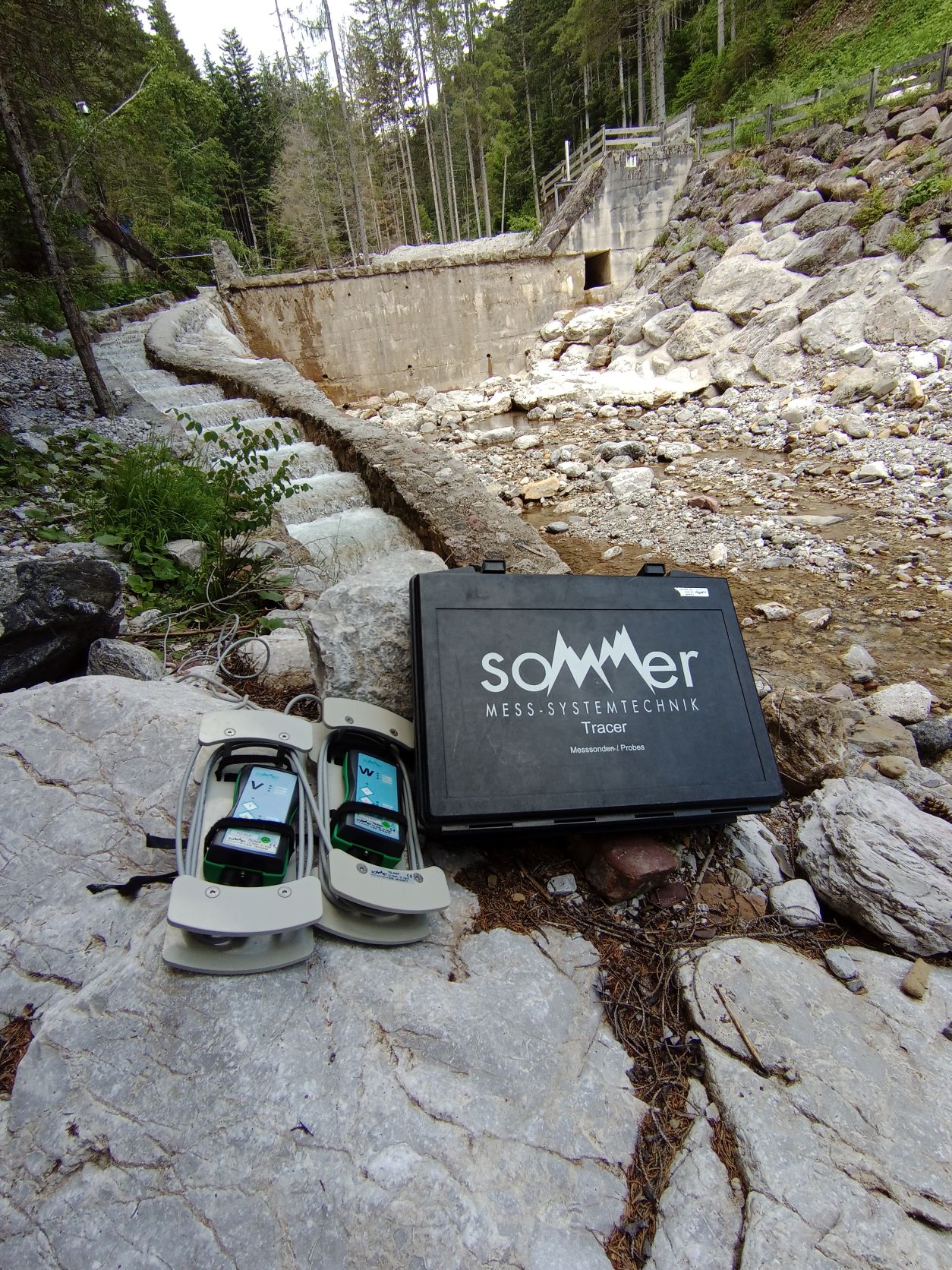ecological Flow monitoring of a fish ladder
CALIBRATION OF A NON-CONTACT SQ-R FLOWMETER WITH A MOBILE TQ-TRACER
Task
In the Dolomites, near Cortina, a new hydropower plant has been built recently. The plant is using the water from the Piova river to generate electricity for the surrounding communities.
According to the European Directive regarding ecological flow that regulates minimum discharges for thriving river ecosystems, a fish ladder was built on the right river bank. With small jumps and pools, fish can pass the dam and migrate upstream. To guide the fish, a minimum flow with sufficient turbulance that enriches the water with oxygen must be maintained.


situation
In order to comply with the applicable regulations, the water flow passing the fish ladder has to be monitored continuously.
Due to the swiftly alternating flow velocity and froth on the water surface, flow monitoring with classical methods is very challenging. Here, the Sommer SQ-R flowmeter offers a solution.
Thanks to a sofisticated, integrated hydraulic model, the SQ-R determines the water flow even under complex flow regimes as it is the case in the fish ladders.
It provides accurate data by using state of the art radar sensors to measure water level and flow velocity contact-free (the latter is certified by METAS, Switzerland).
Additionally, intelligent spectrum analysis is performed to detect different flow velocities that occur in a turbulent river.
In the present situation, the ponds of the fish ladder are very short, creating very difficult flow conditions. Thus, additional salt tracer measurements are performed to verify the water flow monitored by the SQ-R.
implementation
An SQ-R flowmeter was installed at the upstream end of the fish ladder. Connected to a MRL Sommer data logger, water flow data are transmitted regularly to the operator who assesses the flow.
Using the TQ-Tracer Sommer Instruments the water flow was also determined with an alternative method. By comparing the two methods, the settings and the hydraulic model of the SQ-R can be optimized and accuracy increased.
Two TQ probes were submerged at the downstream end of the fish ladder and a small amount of tracer (common table salt) has injected at the upsteam end. The numerous jumps and pools mix the the salt well into the water and the TQ probes can measure the condictivty in a homogeneous flow.
The results show that the SQ-R and the TQ-S, determined nearly the same water flow with a difference of less than 5%.
Thanks to the wide measurement range of the applied sensors and Sommer´s experience, accurate results could be achieved easily and quickly in less than a day.

Further impressions
https://www.sommer.at/de/component/k2/fish-ladder-discharge#sigProId329fa28280



